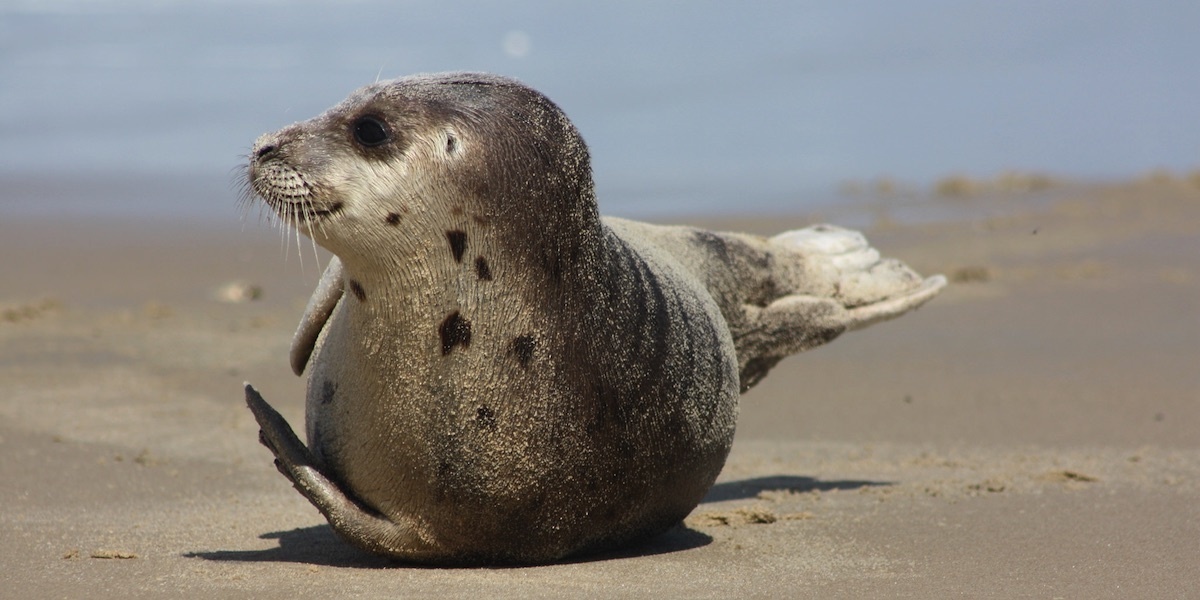

A young harp
seal that washed up dead on the Scottish Isle of Skye last Friday likely died of health complications after ingesting a small piece of plastic wrap, according to scientists who examined the animal.
Scientists with the
Scottish Marine Animal Strandings Scheme (SMASS) performed a necropsy on the animal and described it as an “unusual case” in a Facebook post Wednesday. First, Scotland is outside of the normal range for the Arctic harp seal. Secondly, death from plastic ingestion is rare for seals.
“Plastic ingestion in cetaceans and seals is really rare,” veterinary pathologist and SMASS head Andrew Brownlow told
National Geographic, noting that entanglement from fishing nets or lines is usually the cause of most deaths. “They’re intelligent animals that seem to be able to distinguish between plastic and prey.”
Brownlow, who wrote the Facebook post, said “it is plausible this hungry pup mistook this small bit of floating plastic for food.”
The seal was likely under a year old and its carcass appeared autolyzed, dehydrated and emaciated. “We saw evidence of sepsis, no gross of trauma, a low parasite burden and it hadn’t fed recently,” Bronlow wrote, which indicates that the plastic was not the direct cause but potentially led to a number of health complications.
[facebook https://www.facebook.com/Strandings/photos/pcb.1669535273137253/1669512193139561/?type=3&theater expand=1]
During the necropsy, the scientists found a 2-inch piece of compacted plastic wrap lodged in its stomach. They determined the fragment had been stuck in place for some time and blocked the stomach’s pyloric sphincter, which empties into the intestines, meaning the debris likely prevented the stomach from emptying.
“Once in the stomach, it would not be broken down, and became partially lodged in the narrow opening into the intestine,” Brownlow wrote. “A healthy fit pup would probably have been able to safely manage ingesting a fragment of plastic this size, but in an already compromised animal it could have been influential in its death.”
[facebook https://www.facebook.com/Strandings/photos/pcb.1669535273137253/1669512196472894/?type=3&theater expand=1]
Harp seals, which are not endangered, are usually found in the northern hemisphere. However, it’s not impossible for the highly migratory species to wander south. Brownlow told National Geographic that the animal could have been born in northern Norway but ended up in Scottish waters because it might have been lost or was following other seals or prey.
In the Facebook post, he also suggested that
climate change could be a factor: “As with all ice-associated marine mammals there is concern as to the impacts from global climate warming and the extent and seasonal duration of sea ice cover in the Northern Hemisphere. Pinnipeds such as the harp seal that are dependent on sea ice for pupping, molting and resting are likely to be heavily impacted by future changes in their sea ice habitats.”
Brownlow noted that the seal’s unfortunate death is “yet another reminder of the impact of plastic pollution in the marine environment.”
“We are in the process of running additional tests,” he added, “but this case again highlights the problem of marine debris floating around in our oceans—for a weakened seal pup such as this, even a piece of plastic the size of a sweet wrapper is potentially fatal.”
Chile to Become First Country in the Americas to Ban Plastic Bags https://t.co/yofVmteCWB @savingoceans @PlasticPollutes
— EcoWatch (@EcoWatch) May 31, 2018

 233k
233k  41k
41k  Subscribe
Subscribe 